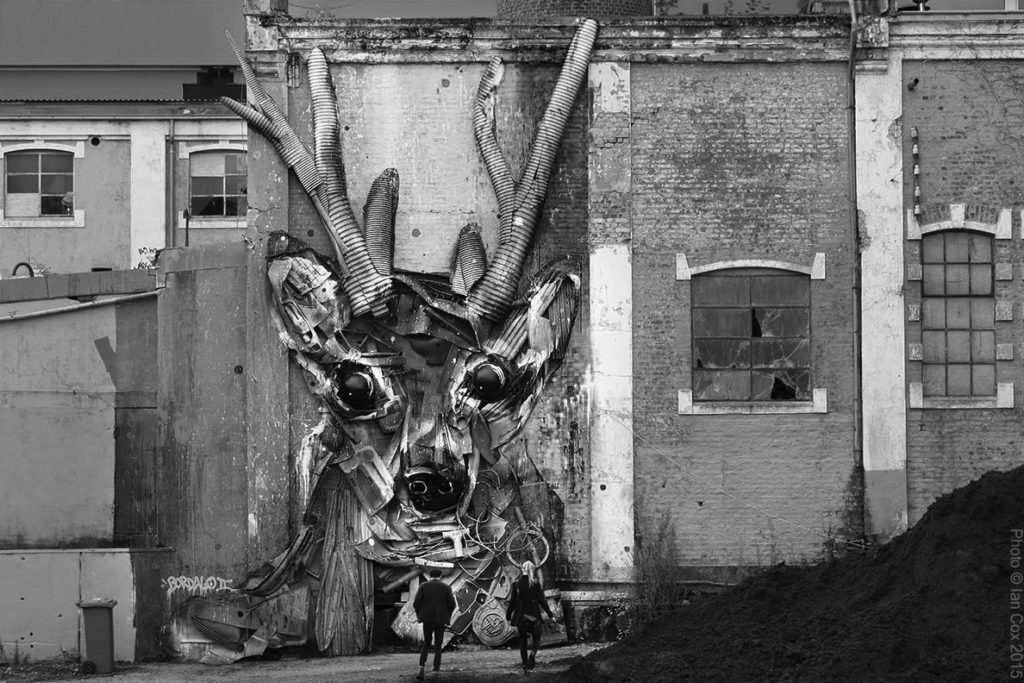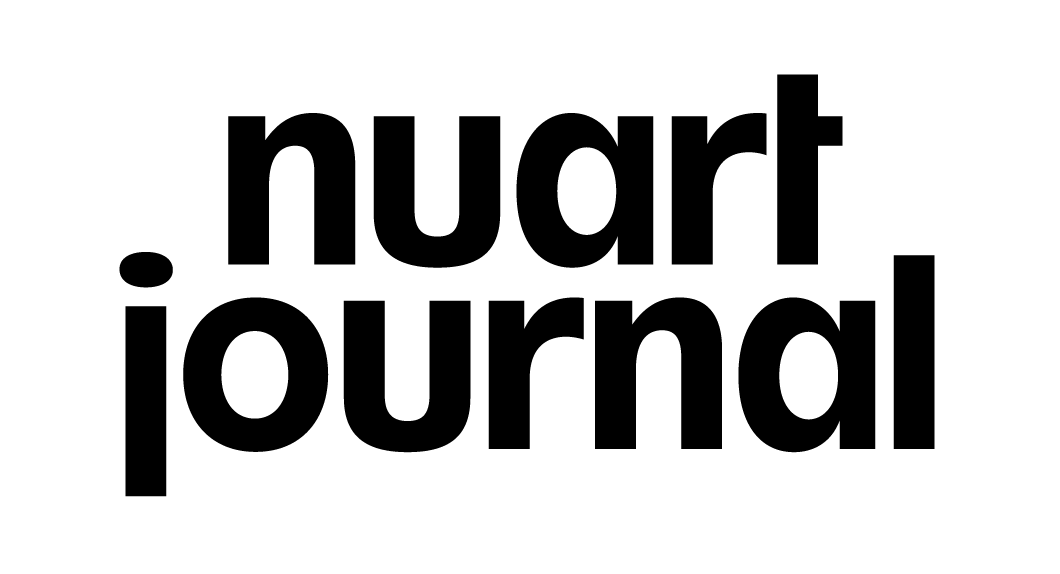To the Streets
An ode, not a battle cry.
Carlo McCormick is an esteemed pop culture critic, curator and Senior Editor of PAPER magazine. His numerous books, monographs and catalogues include: TRESPASS: A History of Uncommissioned Urban Art, Beautiful Losers: Contemporary Art and Street Culture, The Downtown Book: The New York Art Scene 1974-1984, and Dondi White: Style Master General. His work has appeared in numerous publications including: Art in America, Art News, and Artforum.
Nuart is calling and there is urgency to their tone. Things are heating up, battle lines are being drawn, and I still don’t know where I stand. Martyn writes me- “The festival theme is Power, who has it, why and how do they use it, what are the conduits to it and the mechanisms that control it, specifically as it relates to public/private space and the shaping of art and the city… We’re having huge challenges here with the art establishment, public art and public space and public funding being the new battleground. I’d love to keep focus here and champion street art.”
Indeed there is cause for concern, and I’m no help because I’m still jumping down rabbit holes of cultural obscurity, looking for what? A way out, or maybe I’m just ducking for cover. He wants me to address these pressing issues with the polemics I once brought to these things, back when the streets offered so much novelty and discovery for all of us that the possibilities seemed endless. But I still remember that time too well, and even the time before that when we had the cities to ourselves, wastelands of social abandonment so fecund for growing culture. There was a time when artists played in the streets unattended, without adult supervision like those great photos Martha Cooper and many others were taking in the Seventies and Eighties of kids inventing their own play out of rubble strewn vacant lots framed by the shells of burnt out buildings. And it’s not nostalgia to remember that- it wasn’t that great a time to begin with and the urban landscape is far too embattled now to dwell on the past- but it is vital to know how the topography has changed so we can figure out our place in it.
I don’t have a manifesto for the new city, sorry Nuart, just the odd musings of an old flaneur still lost in the crowd, as Baudelaire described “in the heart of the multitude, amid the ebb and flow of movement, in the midst of the fugitive and infinite.” This is the city we all inhabit, all the more so now that the long trend of depopulation has reversed itself and it’s all become that much more busy and crowded. Where do we find a place for art in the new city of prosperity and privilege? More importantly, what kind of art do we need there? Now seems hardly the time to reward and ratify such status with aesthetic bling. In New York City, where I live, the trend for luxury dwellings is to commission major works by artists like Anish Kapoor and Yayoi Kusama, so it might be more important that ever to resist these baubles of vulgar wealth in our public spaces, like Paris- a place that allowed us to fall in love with what a city might be- confronts the extravagance of Koons poisonously baited public art gift. Urbanism increasingly seeks to adapt strategies for bringing utility to the disused zones of our cities, to bring order and rationality to the chaos. Have we forgotten so quickly the lessons of Jane Jacobs who told us in no uncertain terms; “There is a quality even meaner than outright ugliness or disorder, and this meaner quality is the dishonest mask of pretended order, achieved by ignoring or suppressing the real order that is struggling to exist and to be served.” If the city is to have a public art in needs to embrace and even celebrate this ugliness and disorder, not to deny it.
Now don’t get me wrong, I kind of love the idea of public art, but does it have to be so God damn horrible? More than thirty years ago, when I was still young enough to entertain my follies, I had the idea of doing a guidebook of all the very worst public monuments cluttering our towns and cities. Though I knew far less of the world then, and far fewer people than now, I was immediately inundated by people trying to communicate to me how the ugly statuary they walked by daily, commemorating some figure few remembered and fewer yet cared about, deserved the dishonor of such a wretched inventory. And this was before the Internet. Could we presume the cultural clutter of our landscape has gotten any better? Hardly. It sure doesn’t help that the ever-avaricious contemporary art market has gotten into the game. Municipal and corporate bureaucracies have no idea of what we need or want, they simply find consensus in mediocrity. Community-based mural programs hardly have a better record of creative vitality; rather they strangle authentic vision and artistic idiosyncrasy through some wishy-washy negotiation through the petty concerns and imaginative bankruptcy of the many. Surely this is the kind of asshole thinking one should expect of an art critic, but let’s face it, art in the streets does not beg for an overlying authority, it rejects it.
A few years back, stumbling upon an ugly rock inscribed in 1664 as testament to the Danish traitor Corfitz Ulfedt “To his eternal shame, disgrace and infamy,” I thought it possible to define a new kind of monument, to make public shame rather than heroes. I’ve not had much luck in my search since then, though I am somewhat heartened by the establishment of the Fallen Monument Park in Moscow, the Memento Park in Budapest and Stalin’s World near Vilnius, Lithuania. The Soviet Empire has much to contribute to the litany of atrocious public art, but we too have plenty of historical and artistic missteps to fill similar parks of our own. Maybe in the United States this could be the solution to all the suddenly contested monuments to the Confederacy. I’d bet there are plenty of states in the south with ample room for such a hateful assembly and that something like this would be immensely popular with tourists. Let’s too consider a space for all the empty signifiers and boring banalities from the fine art world that populate our public spaces, or even a lot of what street art has given us by a similar measure. There’s plenty of kitsch to go around, so it’s a good project for one of you out there, and I’d be happy to serve on your advisory board, though with my shifting attitudes towards such monumentality I might have to spell that as bored.
Personally, I’m happy to see so many of my friends doing so well in career and life with this global muralist movement. Indeed, in many ways this art is making our cities better. Honestly however, that is not what I got into street art for. Murals, for all their glory, have come too often to work with the city as a commodified space, representations of renewal and hipness that serve a gentrification process which pays little heed to the diversity which makes cities great, landmarks for a new kind of cultural tourism that while laudable have become so prolific we risk the heart of their authenticity; to express the locality of space and not simply play an alternate tune of the same global hegemony perpetrated by multinational franchises.
So what am I looking at these days? I’m trying to reconsider the kind of art that was made when the city was a great canvas precisely because it was abandoned and reviled. I want an art that grows in the forlorn and forbidden, like it was for my generation with the first graffiti masters and those proto-street artists like Haring and SAMO who took their cues from that movement, but also oddities on the periphery of my memory like the wheat field Agnes Denes grew in lower Manhattan in the landfill that would become Battery Park where I used to woo my sweethearts in that brief time before I was married. I’m remembering the early work of Roa, who I came to late in the game but fell in love with when I understood how those murals were about bringing beauty to a place everyone hated, and how that transformation can be something physical and of the heart. I’ve been checking out the work of John Divola, now getting some serious recognition in the art world for his wonderfully abject vandalisms in abandoned spaces in southern California during the Seventies. Scott Hocking too, who is also one of the blessed few to be getting real attention in the art world, was not just one of the leading figures of what we’ve come to recognize Detroit’s great age of “Ruins Porn” wasn’t simply a terrific photographic trespasser but a great sculptor building magical interventions in the mighty vacant cathedrals of America’s industrial collapse.

Nuart 2015: Bordalo II
Photo: © Ian Cox
As usual I’m looking at a lot of garbage, but with a purpose this time. Oh, I don’t mean those “in”formalist heaps of trash that we see piling in MFA programs, galleries, and museums (though I remain beholden to their antecedents in Dada and Schwitters), but artists who are actually confronting the filth itself outside the white cube. Since doing this show called Magic City I’ve been looking for rats that thrive in our rubbish, thanks in this to the help of Christian Omodeo, tracking them from Christy Rupp’s street posters in 1979 through the likes of Blek le Rat and Banksy, but appreciating them too as the union organized protests using inflatables called Scabby the Rat as well as coming to terms with how the unwanted, such as Jews in Europe, have often been depicted as rats, more prevalent now that my country turns to a demagogic vilification of the other. I can’t stop thinking about El Seed’s mural for the garbage collectors in Cairo, or all the work Merle Laderman Ukeles has done with the sanitation department in my hometown since the Seventies. And there’s this wonderful piece “Pink Trash” done in 1982 by Maren Hassinger where she went through Central Park lovingly hand-painting every bit of garbage in her path pink and then placing it back just where she found it. Now that’s fucking alchemy.
I’m totally smitten by the art of this young Polish friend of mine named Adrian Kondratowicz who works in Harlem and the Bronx (as well as further afield in places like India) where he makes decorative trash bags to organize communities to clean up their polluted environments. I was happy to share with him recently the “cultural exchange” organized by the Up Against the Wall Motherfuckers in 1969 where they brought up all the garbage piling up in my neighborhood by subway to dump upon the then recently built Lincoln Center. In fact, I asked Nuart if I could just trash-talk my address so to speak, but well, they quite rightly didn’t think there was any place to go from there if their keynote address was so lowly. I still don’t know what I might talk about, but if by chance it sounds uplifting, understand my mind and heart remains in the gutter.

